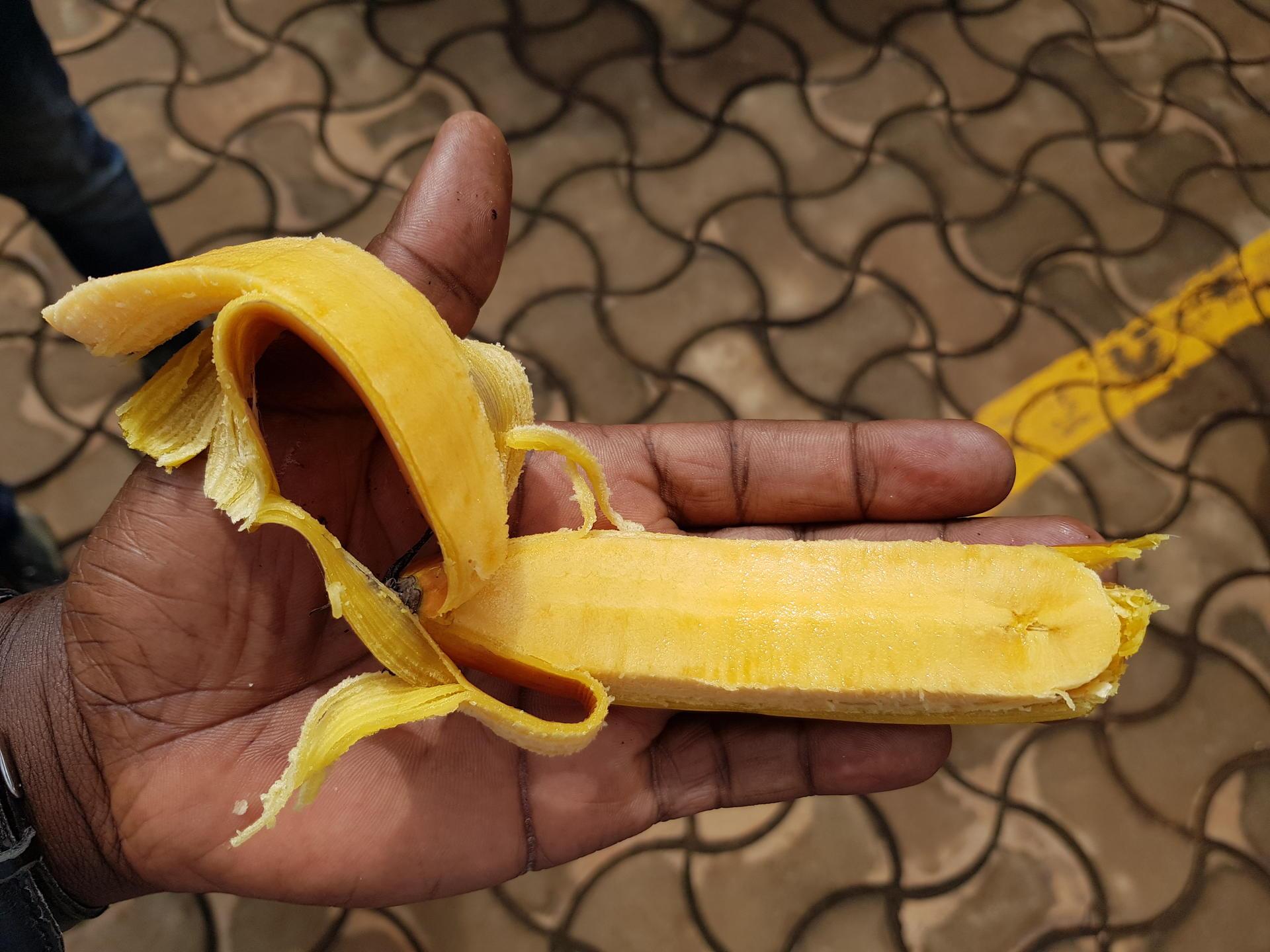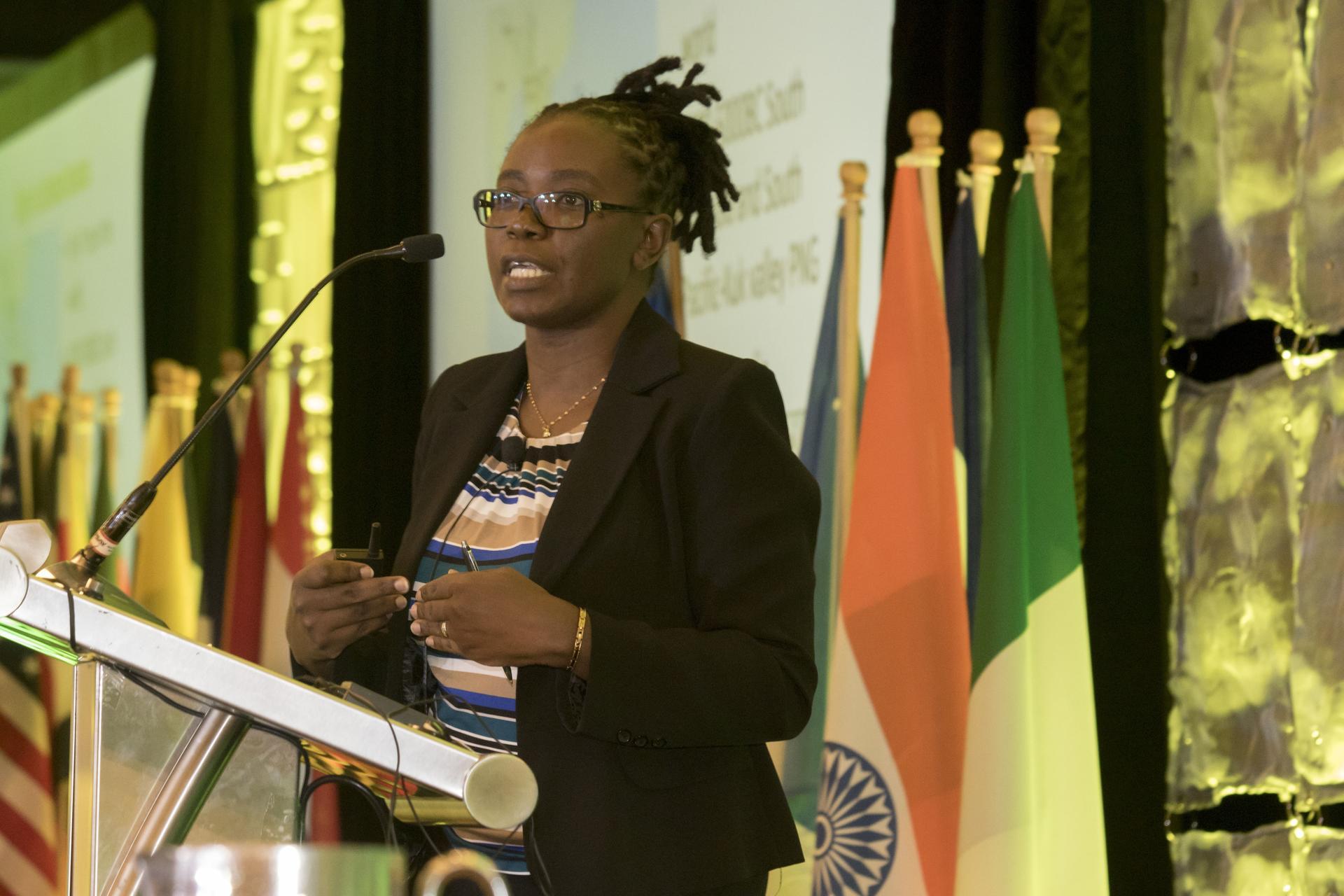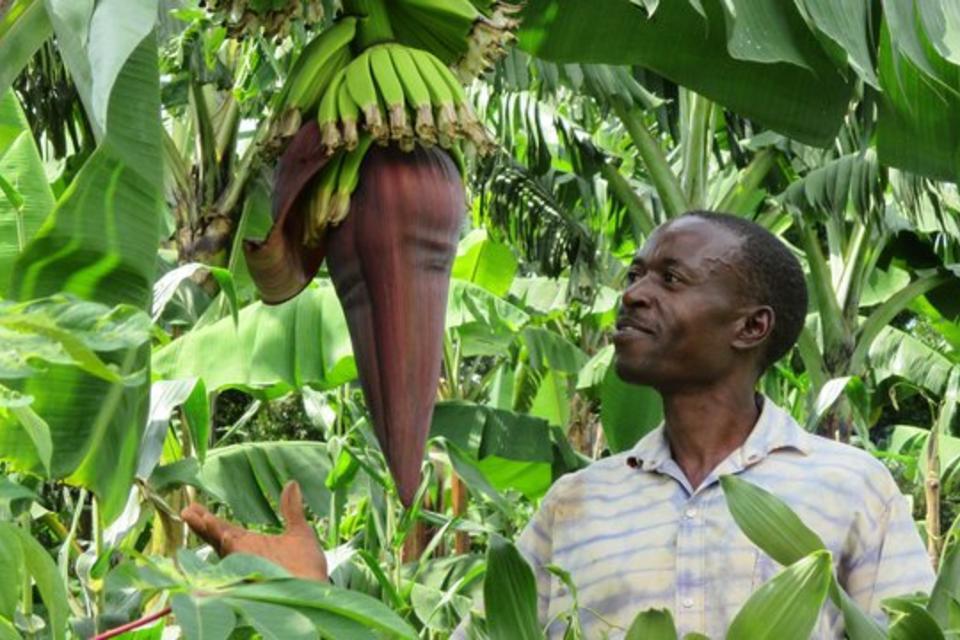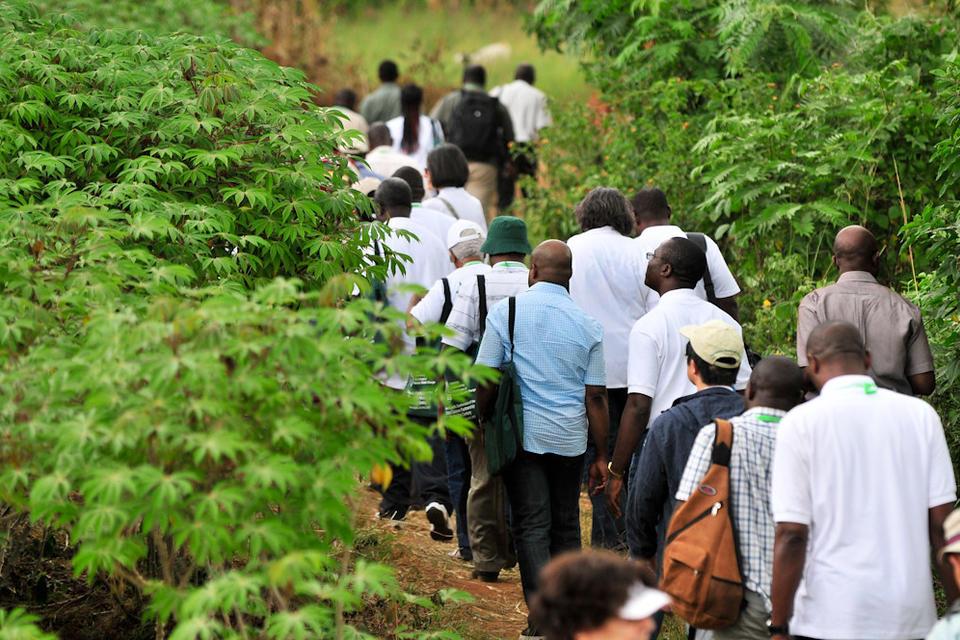From the Field Planting Hope, Harvesting Health: Combating Vitamin A Deficiency in East Africa with Nutrient-Rich Bananas

How are diverse bananas from Asia filling a nutrition gap in Africa? Senior Scientist Beatrice Ekesa details how the times are changing for East Africans’ favorite fruit.
By: Alasdair Lane

Short, thick, with a reddish skin and an orange interior, the bananas Dr Beatrice Ekesa fondly remembers eating as a child have been a rarity for decades, superseded by the fruit’s more recognisable curved green or yellow form. But that’s starting to change. Today, diverse bananas of bygone times are making a comeback to Eastern Africa — not for reasons of nostalgia, but nutrition.
Alongside a team of Alliance of Bioversity International and CIAT colleagues, Dr Ekesa is taking on a devastating vitamin A deficiency crisis that has raged for years, using as her weapon the region’s popular staple food.
“Bananas are eaten daily in different forms by almost everyone in Eastern Africa, but local varieties are not very high in vitamin A. However, we’ve found that other types native to different parts of the world are vitamin A rich — our job is to work with our local communities and introduce these nutritious varieties to the food systems here.”
Addressing vitamin A deficiency
Vitamin A deficiency is the leading cause of preventable childhood blindness and greatly increases childhood mortality from common illnesses such as diarrhoea, measles, and permanent damage to eyesight in Eastern Africa. All demographic groups are affected by VAD, but children under the age of five are the most vulnerable.
Governments and non-governmental organisations (NGOs) have adopted different strategies to address the situation. The distribution of vitamin A capsules, for instance, has had some impact, though rural communities — which dominate large swathes of Eastern Africa — are invariably harder to reach than urban counterparts. Aside from geographical challenges, deep-rooted sociocultural dynamics make people wary of centralised public health initiatives as well, Dr Ekesa says.
Other attempts to address VAD include the fortification of key ingredients — maize, wheat flour, and cooking oils — with vitamins. At a conceptual level, directly targeting people’s diets has merit, but because the chosen foodstuffs aren’t consumed in large enough quantities, and the fortified foods are available in up-market stores with rural communities accessing non-fortified options from local markets, these schemes have also come up short.


Nutritious variants from Asia-Pacific
And so came the idea of vitamin A rich bananas. Fried, barbecued/roasted, boiled, mashed following steaming, or simply peeled and eaten raw, the banana is a mainstay of East African food culture. Across Uganda, Burundi, and Rwanda, the average person eats up to 400kg of the fruit a year — equivalent to as many as eleven bananas a day.
There are hundreds of different varieties of banana around the world, each with unique nutritional values. The dominant cultivar in East Africa, the “East African Highland banana”, is sadly lacking in vitamin A. Variants from other parts of the world are not, however.
That was what specialists from the Alliance of Bioversity International and CIAT at the Belgium-based International Musa Germplasm Transit Centre (ITC) discovered when screening dozens of banana types from across the globe. Samples from the Asia-Pacific region were found to be particularly rich in provitamin A carotenoids a precursor vitamin A, including the rotund, reddish coloured Fe'i banana reminiscent of those eaten by Dr Ekesa as a child, the Tudlo tumbago , Bira and the To'o bananas, which can meet 100% of a child’s daily recommended vitamin A intake with a single serving.
Community outreach
With a range of naturally nutritious bananas selected, the next challenge is one of agronomics: ensuring the crops perform well in local ecosystems, and equipping farmers with the skills they need to successfully introduce a new fruit. Consumer preferences are also important. If the end product doesn’t taste, look, or smell appealing, or is too difficult to prepare, consumption will be low, undermining the entire initiative.
Addressing these community considerations requires a huge amount of outreach, visiting the towns and villages where VAD is highest to create awareness around the positive impact of different types of bananas. A key point to stress is that the bananas are natural and not modified in any way — something local communities are often circumspect about.
As for farmers, training programmes and ensuring their participation in evaluating agronomic atributes, organoleptic attributes and preferred post-harvest handling practices of newly introduced cultivars is key to achieving a high level of buy-in. In this regard, engaging local banana growers as “citizen scientists” is the best approach, Dr Ekesa believes.
“We ask farmers to evaluate the different variants, scoring them based on how well they grow compared to local varieties. We also make clear that the initiative is about banana diversity, not simply replacing pre-existing cultivars with new ones. We tell farmers that the focus is balance, having enough options to be able to choose what to feed the family on and what to take to the market..”

Final piece of the puzzle
To date, over 13,000 farmers households from Burundi, Democratic Republic of Congo and Tanzania have directly received their preferred vitamin A rich banana plantlets from the research team and partners. Instances of farmer-to-farmer sharing of the materials have also been reported.
The final piece of the puzzle is a bioefficacy study that determines how much vitamin A is absorbed after consumption based on a number of variables, including the fruit’s ripeness and preparation. Armed with results from this research — expected mid- to late-2024 — outreach teams will be able to make an even stronger case to local communities.
Even then, some scepticism may persist around bananas sourced from overseas — but as Dr Ekesa reminds people, even in its most locally familiar form, the fruit isn’t native to East Africa.
“Bananas were introduced to this region hundreds of years ago from other parts of the world. We’re really just following up on that process, bringing in different variants that can fit with local diets and play a major role in making people healthier.”
Meet Beatrice

Beatrice Ekesa
Senior Scientist, Country Representative for Uganda
About this work
This research was possible with the support of HarvestPlus, along with national research organisations: TARI-Tanzania, ISABU-Burundi, and INERA-DRC. In Uganda we are working closely with NARO to move this forward.



